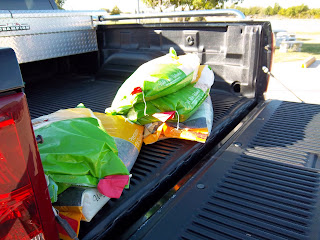
Lucy Park Circle Trail near the park entrance.
I love the woods in the fall, so decided to go to Lucy Park for my Sunday bird walk. Am I glad I did.
Lucy Park is always a bit of a crap shoot for birds. Sometimes you don't see much and other times you hit the jackpot. Today I consider a jackpot day.
In Lucy Park it's guaranteed you will hear lots of cardinals, blue jays and robins. That held true this morning. I was happy when the first bird I saw was a Cooper's Hawk on a bare branch along the Circle Trail. I saw a second Cooper's later in the rear part of the park. I passed through a flock of Carolina Chickadees a little later. At my favorite intersection in Lucy Park I saw and heard a brown creeper. It has been a few years since I have seen a brown creeper--and if I am not mistaken, the last one I saw was also in Lucy Park. I wanted a better look but the tree the bird was using was in a patch of poison ivy. Although I haven't had much problem with poison ivy in the past, I felt that walking through a large patch of it on purpose was tempting fate more than was wise. I would have been happy at this point if I hadn't seen another bird.
A little further down, I passed an area with a lot of underbrush and heard some little birds. I decided to stop and try pishing. Some birds seem to find pishing irresistable. Sure enough, out popped four golden-crowned warblers, two chipping sparrows and a cardinal to see what the crazy birder was up to.
Down by the canoe launch I found my first flock of juncos of the season. I was coming back around to my truck at the entrance and heard a red-bellied woodpecker so I checked out one of the snags nearby and found two red-breasted nuthatches. It doesn't get much better than this.
In addition to the birds mentioned above, other birds seen this morning included: mallard, Canada goose, northern mockingbird, rock pigeon, white-winged dove, mourning dove, Eurasian collared dove, common grackle, great-tailed grackle, red-bellied woodpecker, northern flicker, house finch, and starling.
It looks like the last of the scissor-tailed flycatches have left. I haven't seen any in a few days.
Good birding!








